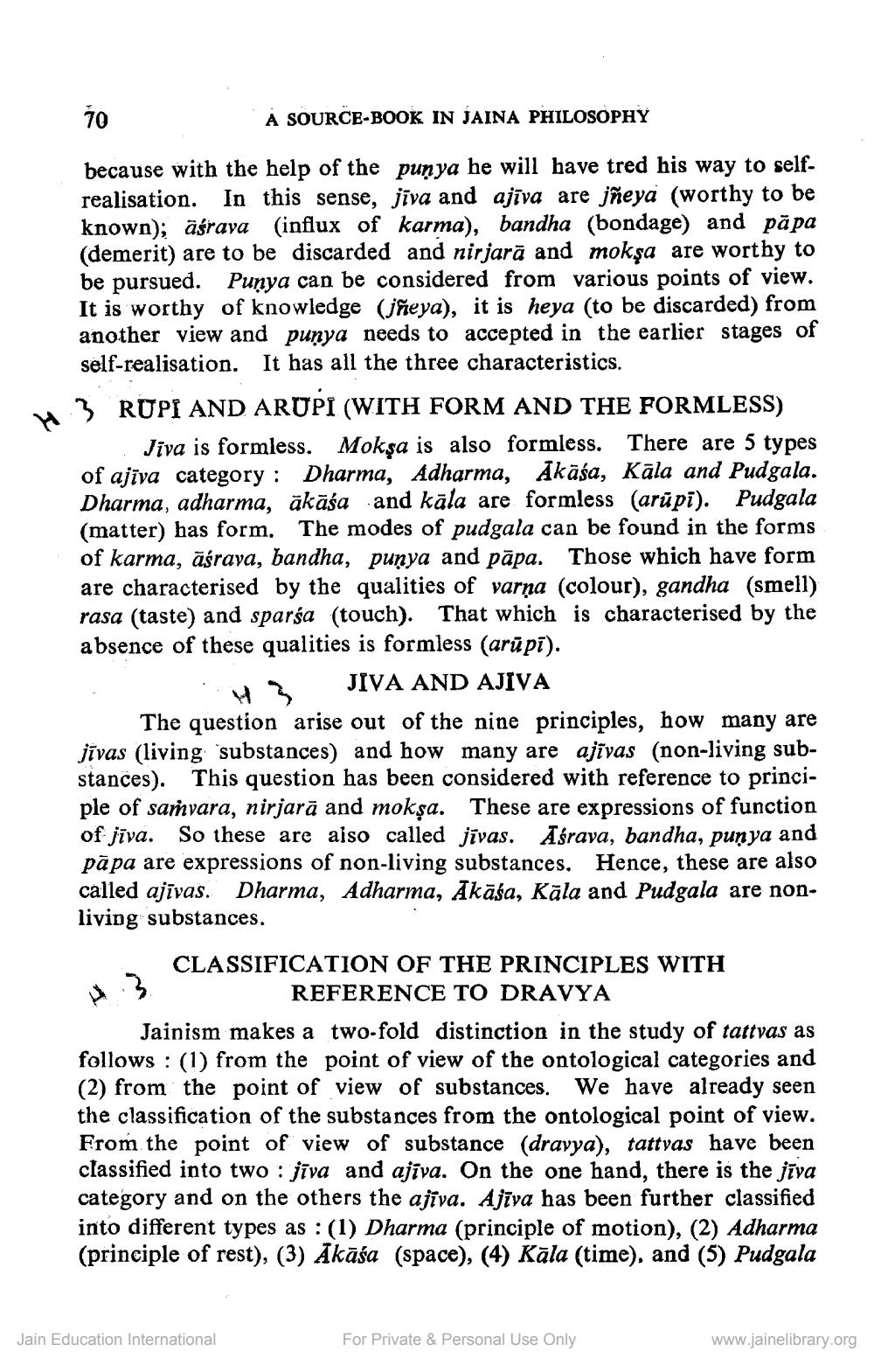________________
10
A SOURCE-BOOK IN JAINA PHILOSOPHY
because with the help of the punya he will have tred his way to selfrealisation. In this sense, jīva and ajīva are jñeya (worthy to be known); āśrava (influx of karma), bandha (bondage) and pāpa (demerit) are to be discarded and nirjarā and mokşa are worthy to be pursued. Punya can be considered from various points of view. It is worthy of knowledge (jñeya), it is heya (to be discarded) from another view and punya needs to accepted in the earlier stages of self-realisation. It has all the three characteristics. 3 RUPI AND ARUPI (WITH FORM AND THE FORMLESS)
Jiva is formless. Moksa is also formless. There are 5 types of ajīva category : Dharma, Adharma, Akāśa, Kāla and Pudgala. Dharma, adharma, ākāśa and kāla are formless (arūpi). Pudgala (matter) has form. The modes of pudgala can be found in the forms of karma, āśrava, bandha, punya and pāpa. Those which have form are characterised by the qualities of varna (colour), gandha (smell) rasa (taste) and sparsa (touch). That which is characterised by the absence of these qualities is formless (arūpī).
3 JIVA AND AJIVA The question arise out of the nine principles, how many are jīvas (living substances) and how many are ajīvas (non-living substances). This question has been considered with reference to principle of saṁvara, nirjarā and mokşa. These are expressions of function of jīva. So these are also called jīvas. Aśrava, bandha, punya and pāpa are expressions of non-living substances. Hence, these are also called ajīvas. Dharma, Adharma, Akāśa, Kāla and Pudgala are nonliving substances. CLASSIFICATION OF THE PRINCIPLES WITH
REFERENCE TO DRAVYA Jainism makes a two-fold distinction in the study of tattvas as follows: (1) from the point of view of the ontological categories and (2) from the point of view of substances. We have already seen the classification of the substances from the ontological point of view. From the point of view of substance (drayya), tattvas have been classified into two : jīva and ajīva. On the one hand, there is the jīva category and on the others the ajīva. Ajīva has been further classified into different types as : (1) Dharma (principle of motion), (2) Adharma (principle of rest), (3) Ākāśa (space), (4) Kāla (time), and (5) Pudgala
H3 CLA
Jain Education International
For Private & Personal Use Only
www.jainelibrary.org




